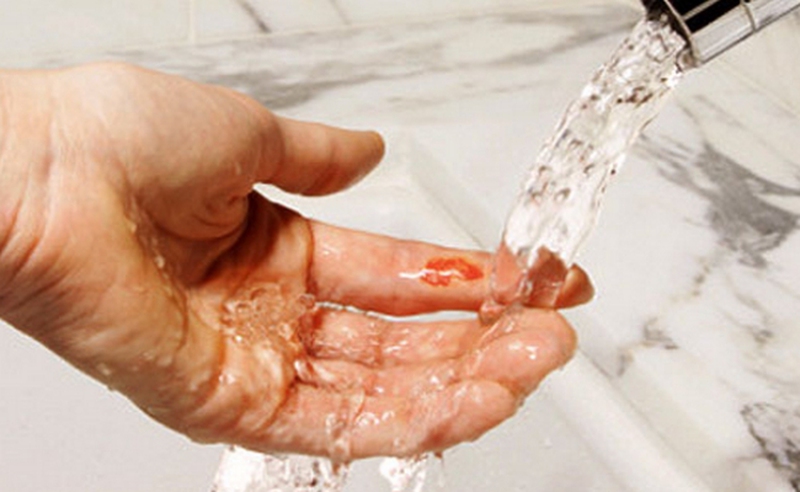Cuts and scratches are an extremely common occurrence resulting from minor trauma, which rarely require treatment. This is because the body will naturally heal and repair the cut without any trouble. That being said, there are certain steps one can take to speed up the healing process and ensure that the cut remains clean whilst healing. This article will explain whether putting hydrogen peroxide on a cut is a good idea or not, as well as detail the best and safest ways to treat a cut.

Is It a Good Idea to Put Hydrogen Peroxide on Cuts?
Hydrogen peroxide is perhaps one of the most common solution with antibacterial properties that is used on cuts to prevent the occurrence of an infection and aid the healing process. Whilst this sounds great, new evidence has caused many to speculate on the effectiveness of hydrogen peroxide when used on cuts and wounds, in fact, many argue that the use of this antibacterial solution can actually hinder the healing process and even cause unwanted damage to one’s skin.
If you have ever used hydrogen peroxide on a cut, then you would be well aware of the painful sensation associated with it. This pain was once thought to be caused by the antibacterial solution killing bacteria within the cut and cleaning the wound, though research now suggests that it also damaging to healthy skin cells, therefore increasing one’s recovery time and hindering the process overall.
In conclusion, whilst hydrogen peroxide has excellent antiseptic and antibacterial properties, the solution is unable to ascertain the difference between what is bacteria and what are healthy skin cells, and therefore damage to one’s skin can occur when using hydrogen peroxide on cuts. Doing this may also increase the chance of scar tissue developing.
The Proper and Best Way to Treat Cuts The Proper and Best Way to Treat Cuts
As mentioned, minor cuts often cause an individual no trouble and will usually heal without issue or exacerbation. That being said, it is most advisable to follow the tips listed below to ensure no unwanted occurrences (such as an infection) arise:
1. Before attending to your minor wound, first ensure that you wash your hands to remove unwanted bacteria.
2. Wait for the bleeding to dissipate fully. This will usually happen on its own, though you can help the process by applying pressure to the wound (with a clean cloth or sterile bandage) and elevating your wound to decrease circulation to the area.
3. Next, clean the open wound wound with clear fresh water. Whilst you should avoid putting soap directly in the wound, you should use it to clean the area around the cut.
4. Once the area is clean, you may wish to lightly apply an antibiotic cream like Polysporin around the area, to ensure that the area does not become dry and also help to avoid infection.
5. The next thing to do is cover the wound. This should be done using a clean bandage, though is not necessary when the wound is only minor.
6. If you do dress the wound with a bandage, ensure that you change the dressing when it becomes dirty. Try to do this at least once a day to prevent an infection.
7. Visit your doctor if the wound appears infected (signs for this include increased sensation of pain, redness, swelling and/or the wound not healing).
8. If the cut is deep then you may require stitches. A tetanus shot may also be required if you haven't had one within the last five years to avoid the occurrence of tetanus arising (which occurs when certain bacteria enter the body via a cut or wound).
What to Avoid When Treating Cuts
Rubbing Alcohol
Rubbing alcohol, like hydrogen peroxide, can cause damage to one’s skin when it comes into contact with it. Again, like hydrogen peroxide, rubbing alcohol can help to avoid infection by killing unwanted germs and bacteria, though the damage it causes to healthy tissue means that it will likely only hinder the healing process.
Let It Air Out
Some assume that it is best to leave a cut uncovered so it can ‘air out’. In fact, applying a bandage to the cut or wound works to prevent infection. Although, as stated, this is not necessary with minor cuts.
Some believe that applying a bandage to a cut will increase the chances of unwanted bacteria forming. As one should be able to ascertain from the information included herein, this is a misconception and the opposite is true.
The Formation of a Scab Indicates Full Healing
Many believe that the formation of a scab is a sure sign this one’s wound is healing. This is not the case, as bacteria can become trapped beneath the surface of the scab and hinder the natural healing process. That being said, if a scab forms you should never pick it, as this will increase the chances of an infection occurring.
Notes
Even the smallest cut provides a pathway for bacteria to enter one’s body. For this reason, it is always advisable to clean a cut using the method detailed above, regardless of its size or severity.
If you experience a cut, remember that it is generally nothing to worry about. Putting hydrogen peroxide on cuts, or rubbing alcohol, is a bad idea, though if you follow the guidance of this article, you should experience no problems throughout your healing process.

View All Comments /Add Comment